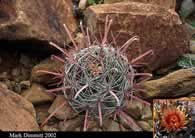
Ferocactus peninsulae var. peninsulae, one of two species of barrel cactus on Cerro Colorado. It has broad, hooked central spines and bristly radial spines. The flowers are consistently orange. |
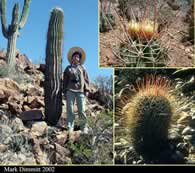
Ferocactus rectispinus is a narrow endemic, usually found near the coast in the vicinity of Bahía de la Concepción. This species is recognized by its very long, straight central spines and lack of bristly radials. The flowers are pure yellow. The Cerro Colorado population is more inland and farther north than any previously documented. |
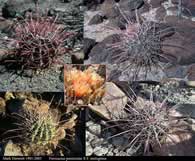
The barrel cacti on Cerro Colorado form a hybrid swarm; most of the specimens are hybrids with a minority of pure plants. There is a tremendous variation in spine form and flower color. This is the only place we know of where Ferocactus hybrids are common. |
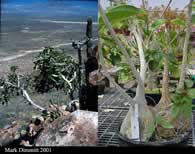
We classify Ficus palmeri as a succulent based on the fleshy caudex of seedlings. The specimens on Cerro Colorado are stunted shrubs. On the lava flow on the horizon there is a 30 X 50 foot tree. |
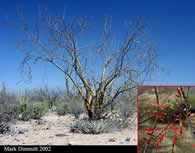
Fouquieria diguetii is common throughout central and southern Baja California. Plants almost always have some flowers and are important hummingbird nectar sources. |
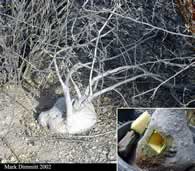
Ibervillea sonorae is widespread in Sonora as well as the peninsula. The above-ground caudex can grow to 3 feet in diameter. Large specimens are very rare, partly because the plants are collected as medicine (guerequi). |
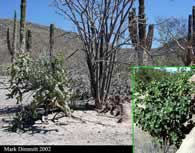
Jatropha cinerea is common and widespread in Baja California and Sonora, but it's found on only one slope of Cerro Colorado. It produces leaves only after heavy rains (inset). |
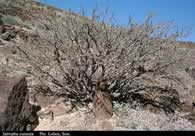
Jatropha cuneata occurs on both sides of the gulf on dry rocky hillsides. |
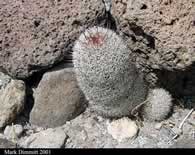
Mammillaria dioica is one of the abundant pincushion cacti, growing from southern California to the Cape region. |